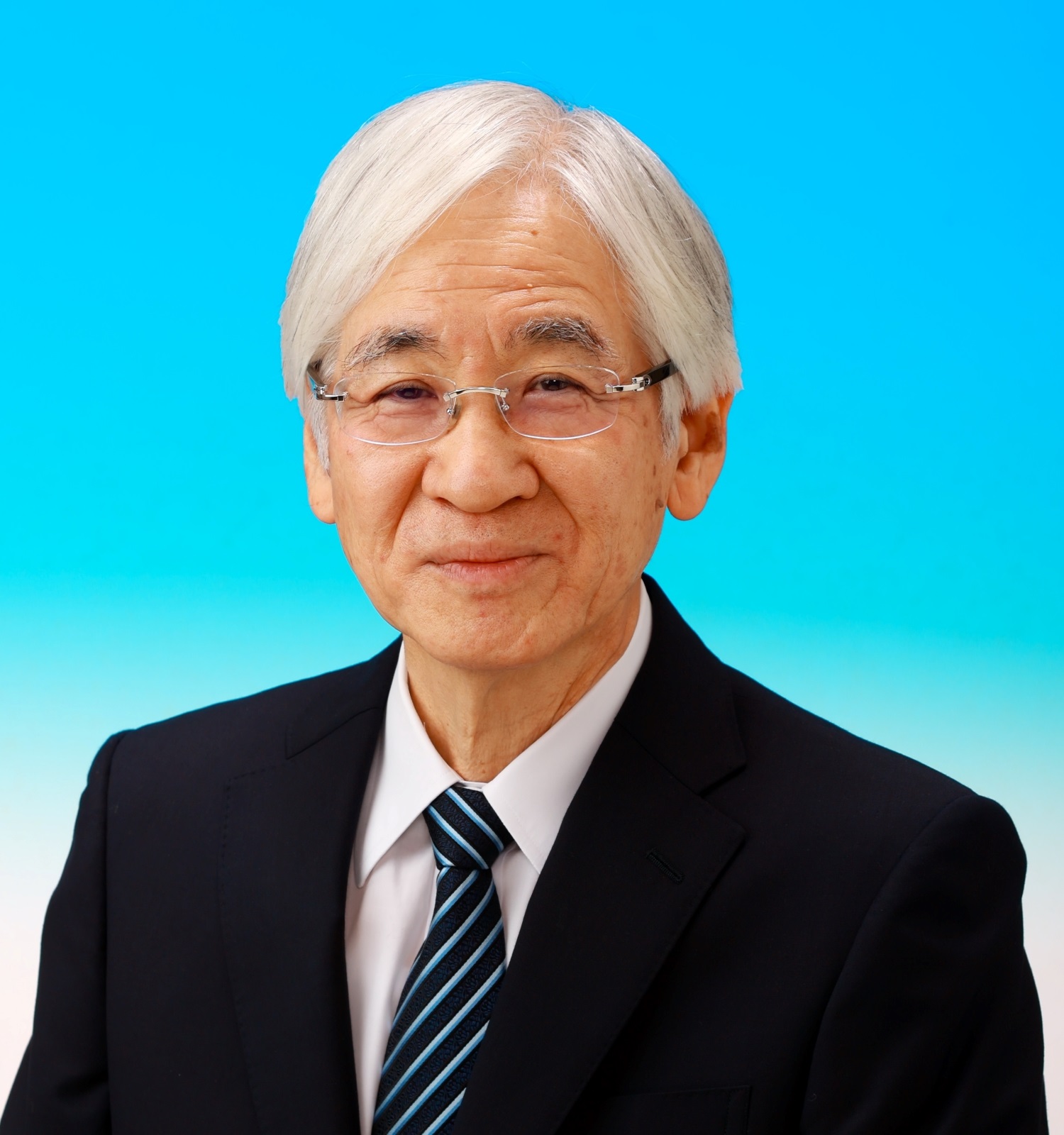Kenji Kamiya, Chair
About
After Hiroshima University was designated a tertiary radiation emergency medical institution, he assumed the role of Director at the Radiation Emergency Medicine Promotion Center of Hiroshima University (renamed in 2022) in 2004. In that capacity, he worked diligently on implementing projects aimed at enhancing Japan’s emergency medical system for radiation-exposed patients.
In the aftermath of the Fukushima nuclear-reactor disaster, he became Vice-President of Fukushima Medical University in 2011. Subsequently, in 2016, he was appointed as Executive Director of the Radiation Medical Science Center for the Fukushima Health Management Survey at the same university, where he engaged in the Fukushima Health Study. He was selected to serve as a Vice-President of Hiroshima University in 2013, with responsibilities encompassing recovery support and radiation-exposure medicine, and he also engaged in university-wide support for recovery efforts in Fukushima. Concurrently, he actively participated in administration-related activities and was appointed as a member of the Cabinet Secretariat’s Professional Group on Nuclear Disasters in 2011, serving as Fukushima Prefecture’s Radiation Health Risk Management Advisor. Since 2014, he has served as Chairperson of the Radiation Council of the Nuclear Regulation Authority, working on efforts to protect the public from radiation.
Education
- 1987
- Ph.D. in Medicine, Hiroshima University
- 1979-1986
- Post Graduate School of Medicine, Hiroshima University
- 1977
- M.D., Hiroshima University School of Medicine, medical license
Experience
-
- 2023-Chair, Radiation Effects Research Foundation
- 2022-2023
Director, Radiation Disaster Medical Support Center, Hiroshima University (renamed in July 2022)
- 2016-2023
Executive Director, Radiation Medical Science Center for the Fukushima Health Management Survey, Fukushima Medical University
- 2016-2023
Specially appointed Professor, Hiroshima University
- 2014-2020
Chairperson, Radiation Council of the Nuclear Regulation Authority
- 2013-2023
Vice-President, Hiroshima University
- 2011-2023
Vice-President, Fukushima Medical University
- 2011-2021
Cabinet Secretariat Government of Japan, Professional Group on Nuclear Disasters
- 2011-2020
Radiation Health Risk Management Advisor, Fukushima Prefecture
- 2011-2023
Specially designated professor to the President, Fukushima Medical University
- 2009-2013
Director, Research Institute for Radiation Biology and Medicine Hiroshima University
- 2006
Adjunct Professor, School of Radiation Medicine and Public Health, Soochow University
- 2004-2022
Director, Radiation Emergency Medicine Promotion Center, Hiroshima University
- 2002-2006
Director, Research Institute for Radiation Biology and Medicine, Hiroshima University
- 1996-2016
Professor, Research Institute for Radiation Biology and Medicine, Hiroshima University
- 1992-1992
Visiting Assistant Professor, Department of Human Oncology, University of Wisconsin-Madison, USA
- 1991-1996
Assistant Professor, Research Institute for Radiation Biology and Medicine, Hiroshima University
- 1988-1988
Visiting Assistant Professor, Department of Human Oncology, University of Wisconsin-Madison, USA
- 1987-1991
Research Associate, Research Institute for Radiation Biology and Medicine, Hiroshima University
- 1982-1987
Research Associate, Project Associate, Associate Researcher, Department of Human Oncology, Clinical Cancer Center, University of Wisconsin-Madison, USA
- 1977-1979
Research Associate, School of Medicine, Hiroshima University
- 1977-1977
Medical staff (resident physicians), University Hospital, Okayama University
Honors and awards
-
- 2022
Chugoku Cultural Award, The Chugoku Shinbun
- 2021
Japanese Radiation Research Society Award for honorary member
- 2020
Certificate of gratitude, Nuclear Regulation Authority
- 2020
Japanese Radiation Research Society’s JRRS Outstanding Contribution Award
- 2017
Radiation Effects Research Achievement Award, Radiation Effects Association
- 2013-
Recognized as Hiroshima University “Distinguished Professor”
- 2012
Awarded for contributions to disaster prevention by Prime Minister, Cabinet Office
- 2011
Hiroshima University Special Presidential Commendations
- 2009
Awarded for contributions to disaster prevention by Minister of State for Disaster Management, Cabinet Office
- 2009
Presented with Asian Association for Radiation Research Award
- 2022
Selected publications
- Sasatani M, Shimura T, Doi K, Zaharieva EK, Li J, Iizuka D, Etoh S, Sotomaru Y, Kamiya K. Morphology dynamics in intestinal crypt during postnatal development affect age-dependent susceptibility to radiation-induced intestinal tumorigenesis in Apc Min/+ mice: possible mechanisms of radiation tumorigenesis. Carcinogenesis, 44:105-118. 2023.
- Takahashi H, Yasumura S, Takahashi K, Ohira T, Ohtsuru A, Midorikawa S, Suzuki S, Shimura H, Ishikawa T, Sakai A, Suzuki S, Yokoya S, Tanigawa K, Ohto H, Kamiya K. Nested matched case control study for the Japan Fukushima Health Management Survey’s first full-scale (second-round) thyroid examination. Medicine (Baltimore), 99 (27): e20440. 2020.
- Ohira T, Ohtsuru A, Midorikawa S, Takahashi H, Yasumura S, Suzuki S, Matsuzuka T, Shimura H, Ishikawa T, Sakai A, Suzuki S, Yamashita S, Yokoya S, Tanigawa K, Ohto H, Kamiya K; Fukushima Health Management Survey group. External Radiation Dose, Obesity, and Risk of Childhood Thyroid Cancer after the Fukushima Daiichi Nuclear Power Plant Accident: The Fukushima Health Management Survey. Epidemiology, 30: 853-860. 2019.
- Sasatani M, Xi Y, Kajimura J, Kawamura T, Piao J, Masuda Y, Honda H, Kubo K, Mikamoto T, Watanabe H, Xu Y, Kawai H, Shimura T, Noda A, Hamasaki K, Kusunoki Y, Zaharieva EK, Kamiya K. Overexpression of Rev1 promotes the development of carcinogen-induced intestinal adenomas via accumulation of point mutation and suppression of apoptosis proportionally to the Rev1 expression level. Carcinogenesis, 38(5): 570-578. 2017.
- Kamiya K, Ozasa K, Akiba S, Niwa O, Kodama K, Takamura N, Zaharieva EK, Kimura Y, Wakeford R. Long-term effects of radiation exposure on health. Lancet, 386(9992): 469-78. 2015.
- Yasumura S, Hosoya M, Yamashita S, Kamiya K, Abe M, Akashi M, Kodama K and Ozasa K. Study Protocol for the Fukushima Health Management Survey. J Epidemiol, 22(5): 375-383. 2012.
- Tanigawa K, Hosoi Y, Hirohashi N, Iwasaki Y, Kamiya K. Loss of life after evacuation: lessons learned from the Fukushima accident. Lancet, 379: 889-891. 2012.
- Masuda Y, Takahashi M, Tsunekuni N, Minami T, Sumii M, Miyagawa K, Kamiya K. Deoxycytidyl transferase activity of the human REV1 protein is closely associated with the conserved polymerase domain. J Biol Chem, 276(18): 15051-15058. 2001.
- Kamiya K, Gould MN, Clifton KH. Quantitative studies of ductal versus alveolar differentiation from rat mammary clonogens. Proc Soc Exp Biol Med, 219(3): 217-225. 1998.
- Kamiya K, Yasukawa-Barnes J, Mitchen JM, Gould MN, Clifton KH. Evidence that carcinogenesis involves an imbalance between epigenetic high-frequency initiation and suppression of promotion. Proc Natl Acad Sci USA, 92: 1332-1336. 1995.


